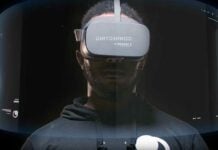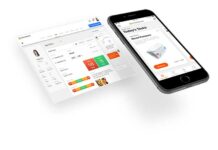According to a recent study by GSMA and PwC called “Touching Lives through Mobile Health: Assessment of the Global Market Opportunity” it is likely that mobile health will make a significant difference in Africa in terms of bridging the healthcare access gap. Until 2017 Diagnosis (60%market share) and monitoring services (29% market share) are expected to be the two largest opportunities in the continent according to the PwC analysis.
Mobile penetration rate in African countries is already exceeding 70% according to a study by A.T. Kearney and this is realistically expected to grow in the years to come. And we also think that Jon Evans of TechCrunch is probably right when he says “In five years, most Africans will have smartphones”.
With this in mind, it is very probable that WT products will also play an important role here. Especially when it comes to diagnosis and monitoring, small portable and wearable devices as well as smartphone accessories will offer great possibilities.
Below you will find a list of interesting products and projects for this market. Please let us know of any other useful products that are not yet on our list (@WearableTech on Twitter)!
medAfrica is a medical services content platform that comes in the form of a mobile app with the mission of increasing access to health-related content and services for saving lives and building a healthy population. Its aim is to reach every household in Africa.
Thinklabs developed the Stethoscope App that can visualize and record heart sounds with iPhone or iPod touch. The app works together with an electronic stethoscope.
Another stethoscope solution comes with a mobile app called StethoCloud and smartphone accessory called StethoMic. It is a low-cost digital stethoscope that has been prototyped from off-the-shelf components utilising the powerful digital signal processing chips on modern smartphones. The app currently runs on Windows Phone, Android and legacy J2ME-compatible phones. An iOS version of the app is in development. The system can be used by a health worker to record a child’s breathing sounds and analyze them via the app.
We are also reading about an incredible AIDS test solution for cell phones that works with a mini-microscope and the light inside the smartphone camera, with which a blood sample could be analyzed with the help of an app.
Medical giants are also offering portable solutions for countries that have a lot of sun available but not much electricity. Omron has a unique solar charging semi-automatic blood pressure monitor in its product portfolio.
We already reported on the ToucHb in our last issue of WTnews (Q4/2012), but the non-invasive, instant and portable anaemia scanner also fits very well into this list. This hand-held, needle-free battery operated device enables haemoglobin to be estimated and makes it easier for health workers to monitor treatment on a regular basis.
In the same issue of the WTnews we wrote about the Q-POC which is a portable device for diagnosing malaria. This point-of-care device is still in development and will soon be delivering accurate medical diagnosis in less than 20 minutes, with the same sensitivity and specificity as any state-of-the-art full laboratory, at the patient’s side, but at a fraction of the cost.
WinSenga is a Windows Phone solution that enhances and extends the functionality of a Pinard horn, traditionally used by Traditional Birth Attendants for antenatal diagnosis, to deliver timely, effective and affordable antenatal diagnosis and care. The solution comprises a modified, highly sensitive microphone placed at the position of the first harmonic inside the horn; the resulting component is then plugged into the phone. The microphone picks up sounds from the mother’s belly and feeds them into the phone, which analyzes the sound via the WinSenga application and returns relevant health advice and suggestions.
Another solution for pregnant women comes from the company MobiSante. With the MobiUS™ SP1 ultrasound system the company claims to have built the world’s first smartphone-based ultrasound imaging system. The patent-pending product offers accurate and inexpensive diagnostics at the point of care. The device is plugged directly into a smartphone.
Stanford University is currently testing a screening tool called OScan for oral lesions in India. The inexpensive device is mounted on a conventional camera phone and allows data to be instantly transmitted to dentists and oral surgeons. The project aims to empower minimally-skilled health workers to connect early stage patients to healthcare providers and teach communities about the importance of oral hygiene.
The MIT Media Lab is working on a project called CATRA that also works with the camera of a phone. The solution is being developed to detect and quantify cataracts using a compact eyepiece attached to a cell phone. With no moving parts and built from off-the-shelf components, the solution is well suited for the developing world. Cataracts are the leading cause of blindness worldwide.
Moreover, besides these scanning devices for the mouth and the eyes, CellScope is working on patent-pending solutions for the ears and for the skin. Firstly, they have a Smart Otoscope which is a clip-on otoscope for scanning the middle ear, allowing infections of the ear to be diagnosed and treated remotely. Secondly, a Smart Dermascope is a clip-on dermascope that enables high-magnification, diagnostic-quality images of the skin to be captured and transmitted.
There is definitely more to come in the future, and we are really looking forward to it!















